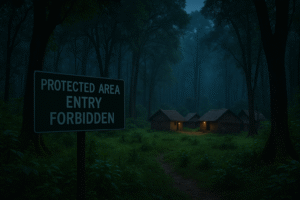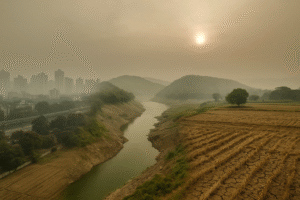Fun Fact: India has the largest child population in the world, with over 400 million children under the age of 18!
Ask anyone who grew up in India what their childhood was like, and you’ll get a mix of warm nostalgia and quiet rebellion. On one hand, there are bedtime stories told by grandparents, noisy kitchens filled with the smell of tadka, and cousins who doubled up as best friends. On the other hand, there’s the pressure of marks, curfews, comparison, and the sacredness of “log kya kahenge” (what will people say?).
This unique blend is what makes Indian childhoods both restrictive and expansive. At first glance, these two words might seem contradictory, but together, they tell a deeper story—of boundaries that shaped us, and the freedoms we carved within them.
The Restrictive Side: Roots That Bound
The Tyranny of Academics
In India, childhood is often synonymous with school, tuition, homework, and exams. Scoring well in board exams isn’t just encouraged—it’s expected. Children grow up under constant pressure to perform, especially in science and mathematics, fields seen as gateways to job security and respect. “Beta engineer ban jao (Become an engineer)” is not advice; it’s prophecy.
Overprotection in the Name of Love
Indian parents, especially in middle-class families, are famously protective. Children are rarely allowed to walk alone to school, take up creative careers easily, or make big decisions independently. It comes from love, no doubt, but it often curtails exploration. Safety becomes a priority over self-discovery.
The Culture of Comparison
Whether it’s with Sharma ji ka beta (the neighbour’s child) or with cousins, Indian kids grow up with competition embedded in their identity. There’s a constant pressure to excel—not just do well. Personal interests often take a backseat to societal expectations.
Limited Conversations Around Emotions
Mental health discussions are still catching up in many Indian households. Phrases like “Don’t cry like a girl” or “Just study, you’ll feel better” reflect how emotional expression is often suppressed or misunderstood during childhood.

The Expansive Side: Wings That Grew
Yet, within these very constraints, Indian childhoods offer a kind of richness and grounding that’s hard to replicate elsewhere.
The Strength of Community
Growing up in India often means growing up in a web of relationships. Grandparents, neighbours, family friends, domestic help—everyone is part of your ecosystem. Children learn empathy, tolerance, and shared responsibility early on.
Multilingual Marvels
It’s not unusual for Indian children to switch between three or four languages before they hit their teens. English at school, Hindi at home, and maybe Bengali, Tamil, Marathi, or Punjabi with extended family. This multilingual environment nurtures cognitive flexibility and cultural sensitivity.
Celebrations as Identity Builders
Every festival is a full-sensory experience. Whether it’s flying kites on Makar Sankranti, lighting diyas on Diwali, or smearing colours on Holi, Indian kids grow up with a deeply embodied sense of tradition, joy, and belonging.
Resilience Through Scarcity
Many Indian children grow up making the most of limited resources—turning newspapers into cricket balls, rooftops into playgrounds, and imagination into escape. This nurtures creativity, adaptability, and problem-solving from a young age.
A Balancing Act
So what makes Indian childhoods so unique? It’s the constant tug-of-war between control and chaos, order and play. It’s being told not to talk back, but also being encouraged to win debates. It’s being asked to follow rituals, yet being allowed to invent our own.
This duality isn’t a flaw; it’s a feature. The restrictions teach boundaries. The expansiveness teaches how to bend them. In a rapidly globalising world, that balance might just be the superpower today’s Indian children carry into adulthood.
Conclusion
Indian childhoods are not perfect, but they are powerful. Yes, they come with weight—of expectations, comparisons, and cultural norms. But they also come with warmth, colour, family, and an undeniable ability to stretch beyond the lines drawn for them.
In celebrating the complexity of Indian childhood, we don’t deny its challenges. We recognise its capacity to build adults who are rooted, yet ready to fly.
Let’s raise children not by choosing between discipline and freedom, but by helping them carry both with grace.
Author’s Note
As someone who grew up straddling expectations and imagination, I believe Indian childhoods are uniquely poised to create balanced, emotionally intelligent adults. This article is an ode to both the guardrails and the green fields of growing up in India.
G.C., Ecosociosphere contributor.




